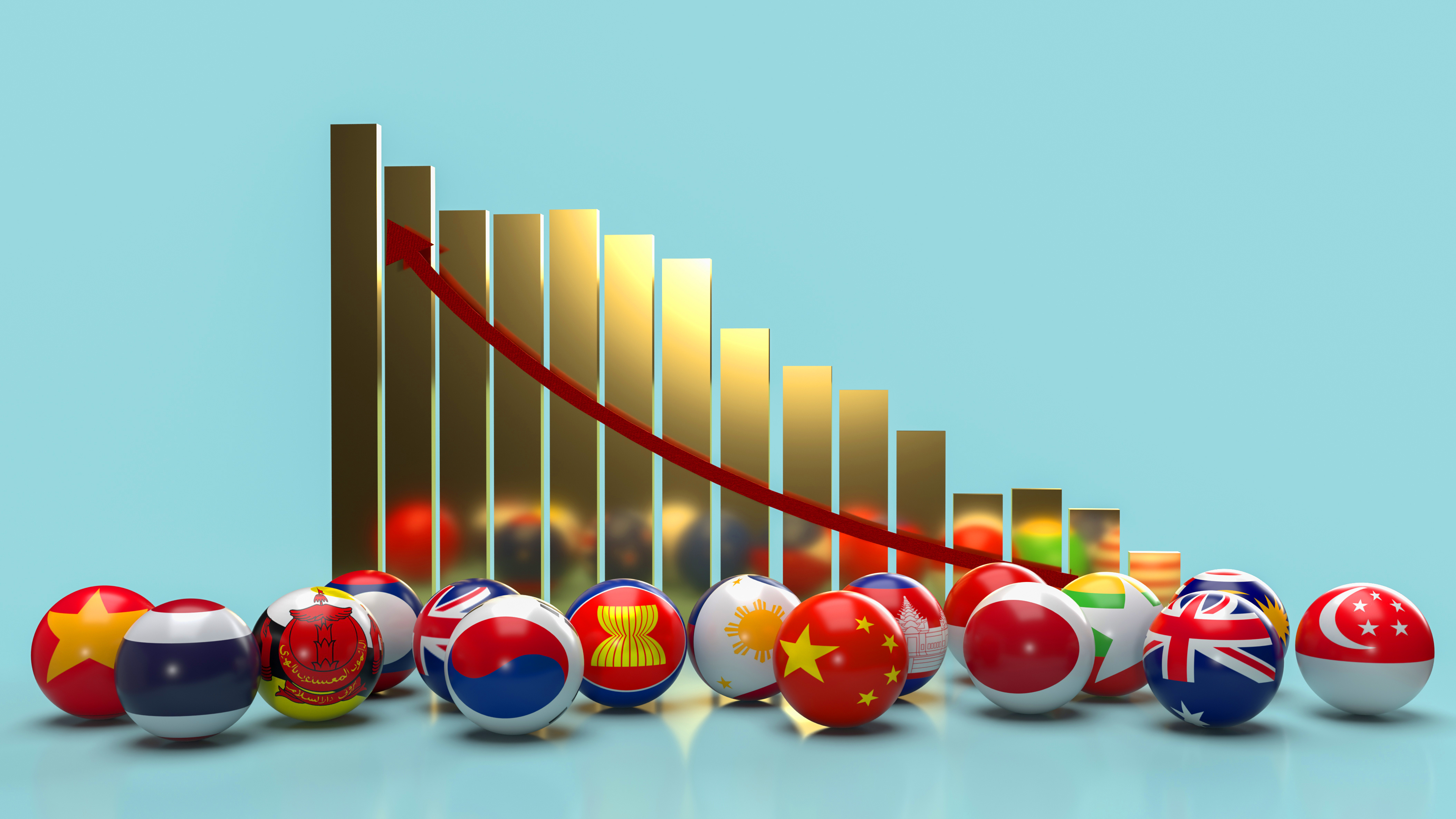Spotlight on RCEP, the world's largest free trade zone
2020 is also the year of implementation of RCEP, the largest free trade zone in the world. As a direct consequence of the unilateral policy of the Trump administration, the RCEP is accelerating the economic and social transformation of the Asia-Pacific. L

On November 15, 2020, at the fourth leaders' meeting of the Regional Comprehensive Economic Partnership (RCEP), 15 member states, including the ten ASEAN countries, China, Japan, South Korea, Australia and the New Zealand have officially signed an agreement after eight years of negotiations. With a third of humanity, it is the largest free trade zone on the planet.
The establishment of the Trans-Pacific Partnership(TPP) by the United States had reduced the willingness of some countries to participate in the RCEP. However, after the Trump administration withdrew from the TPP to promote unilateralism, the RCEP moved forward. What is the meaning of signing the RCEP? What is its contribution? What real impact will it have on China?
A tortuous history
The RCEP concept, however, is not a Chinese initiative. First proposed and initiated by the ten ASEAN countries in 2011, it is based on the five free trade agreements of ASEAN-China, ASEAN-Japan, ASEAN-Korea, ASEAN-Australia-New- Zealand and ASEAN-India.
However, in the face of the United States' TPP strategy, as well as the differences between China and Japan, the RCEP negotiation process has been extremely difficult and tortuous. Historical reminders. From 2013 to 2017, the RCEP conducted a total of 20 rounds of negotiations. During the same period, under the vigorous promotion of the United States, the TPP achieved great success. This has reduced the urgency and political will of some countries (such as Japan) to participate in RCEP.
In 2017, however, the RCEP entered an acceleration phase. On the one hand, the United States' withdrawal from the TPP has caused some member states that initially intended to develop foreign markets through the TPP to begin pinning their hopes on the RCEP. On the other hand, faced with a certain unilateralism and protectionism from the Trump administration, Asia-Pacific countries wanted to promote free trade essential to their development and accelerated the implementation of the RCEP.
This agreement could have brought together almost half of the world's inhabitants if, at the final stage of the negotiations, India's Modi government had not chosen to withdraw in favor of bilateral agreements (notably with Australia and New Zealand). Evoking “the memory of the Mahatma”, the Modi government preferred to prevent the possible negative consequences on “the lives of the poorest people in the nation” of a massive arrival of products from China.
Strengths and weaknesses of RCEP
The RCEP aims not only to eliminate trade barriers within member countries, create and improve a freer environment for trade and investment, but also to promote discussions on the formulation of new rules.
First of all, the RCEP has achieved remarkable results in the basic rules of the free trade agreement, especially trade and investment liberalization. RCEP's overall level of merchandise trade openness could reach over 90% with reductions in customs duties among members based primarily on immediate reduction to zero tariff or commitment to zero tariff by ten years (excluding agricultural goods).
RCEP member states will negotiate investment access in the form of a negative list.
The RCEP focuses on the integration of rules, trying to escape the chaotic pattern formed by the simultaneous existence of multiple economic and trade agreements in the Asia-Pacific. This agreement provides member countries with flexible rule options, hoping to significantly increase the rate of use of RCEP by businesses. The RCEP also introduced more transparent and efficient customs procedures to further reduce non-tariff barriers.
On the other hand, the RCEP retains institutional flexibility in order to take into account the differences between developed and developing member states.
The RCEP has deliberately made special provisions to ensure that all member states can benefit from the dividends of the system. For example, on intellectual property, there is an annex of transitional clauses for certain member states, allowing them to gradually implement new regional agreements.
Third, the RCEP has also established relevant regulations in the area of trade disputes. For example, on the digital economy, RCEP reduced trade barriers and various restrictions imposed by member states, while protecting consumers' information online.
In conclusion, the RCEP therefore displays strong ambition. Beyond these provisions and its intentions, however, the RCEP still has relatively little economic content. “The box is enormous, but what is inside is not considerable,” Pascal Lamy, former director general of the WTO, recently commented.
Political and economic effects for China and the region
First, free trade rules such as "zero tariffs" will allow Asia-Pacific countries to more closely form a regional economy, thereby significantly covering the pressures of Sino-US economic decoupling.
Second, RCEP is a historic breakthrough. For the first time, China and Japan conclude a tariff concession agreement. China and Japan are the two largest economies in East Asia, but the China-Japan-Korea Free Trade Area is still under negotiation, and the China-Japan bilateral free trade negotiations are still under negotiation. haven't even started. RCEP, however, is the only free trade agreement in which China and Japan participate at the same time.
RCEP standards on trade and investment liberalization and facilitation, digital trade and others require China to adapt to the upgrade of new international standards and regulations as soon as possible.
A new chapter in Asia-Pacific
The RCEP recognizes the decoupling between economics and politics. The RCEP marks the first trade agreement to link the region's three economic heavyweights, China, Japan and South Korea, despite certain political tensions. For its part, China is safeguarding its interests in a market with more than 2 billion consumers, while giving itself the possibility of deploying new production chains in Southeast Asia. Speculation is now rife to anticipate the evolution of the position of Joe Biden's United States. Joining a free trade zone, about which the new president has expressed reservations, would be surprising but would allow the United States to regain a foothold in an essential region. A new chapter in the integration of the Asia-Pacific region has just opened.
